Let’s face it, building and deploying software in 2025 isn’t as straightforward as it used to be.
You’ve got cloud platforms, continuous updates, microservices, and customers who expect speed, security, and zero downtime.
That’s where DevOps with AWS comes in.
Whether you’re exploring the basics of DevOps development or scaling your CI/CD pipelines in the cloud, AWS gives you a seriously powerful toolkit to implement DevOps practices that just work.
This guide is your go-to walkthrough of what AWS DevOps is, how it works, why it matters, and how you can make it part of your workflow.
Let’s dive in!
What is AWS DevOps?
At its core, AWS DevOps is about combining DevOps development services with the power and flexibility of the AWS cloud.
It’s not a single tool or product.
Instead, it’s a suite of services and practices that help you:
- Automate infrastructure
- Streamline development and deployment.
- Improve code quality
- Release faster and more reliably.
Think of it as a cloud-powered engine for implementing DevOps practices at scale.
From version control and CI/CD to monitoring and infrastructure as code (IaC), AWS cloud DevOps has you covered, no matter your stack or team size.
How Does AWS DevOps Work?
Here’s the short version:
You write your code.
You commit it to a repo (say, GitHub or AWS CodeCommit).
From there, AWS kicks into gear.
Using tools like AWS CodeBuild, AWS CodePipeline, and AWS CodeDeploy, your code is built, tested, and shipped automatically.
That’s the heart of the AWS DevOps process. It's built around continuous integration (CI) and continuous delivery (CD), backed by cloud-native tools that are fully managed and highly scalable.
But it doesn't stop at shipping code.
You can also monitor everything using CloudWatch, trace performance issues with X-Ray, and define your infrastructure using CloudFormation or AWS CDK.
It’s a full DevOps loop, automated, efficient, and reliable.
Difference Between Azure DevOps & AWS DevOps
Great question! This one comes up a lot.
Let’s break it down:
► Azure DevOps
- A suite of DevOps tools created by Microsoft.
- Includes Azure Boards, Pipelines, Artifacts, Repos, and Test Plans.
- Excellent if you’re already all-in on Microsoft tools or NET.
► AWS DevOps
- A set of DevOps services built directly into AWS.
- Includes CodeBuild, CodeDeploy, CodePipeline, CloudWatch, and more.
- Perfect for teams building on AWS, containerizing apps, or managing microservices.
If your infrastructure and apps live in AWS, you’ll benefit more from native integration, autoscaling, and the flexibility of AWS DevOps tools.
The big takeaway? Choose the platform that best aligns with your stack and goals, but if it’s cloud-native agility you’re after, DevOps with AWS is the way to go.
Why Choose DevOps with AWS?
You want to move fast, reduce downtime, and build software your users love, without burning out your dev team.
That’s exactly what DevOps with AWS enables you to do.
Below are the key reasons businesses, from scrappy startups to global enterprises, are leaning on AWS cloud DevOps to supercharge their delivery pipeline.
1. Speed Like You’ve Never Seen
Implementing DevOps practices with AWS means you can deploy changes multiple times per day without worrying about system crashes or user complaints.
CI/CD pipelines, powered by services like CodePipeline and CodeDeploy, automate the entire flow, from code commit to production.
This means less firefighting, more feature shipping. The result? Your team iterates faster, customers get updates quicker, and your business stays miles ahead of the competition using AWS DevOps tools that scale.
2. Fully Managed Tooling
Forget the days of setting up Jenkins servers or writing complex deployment scripts.
AWS DevOps tools like CodePipeline, CodeBuild, and CodeDeploy are fully managed, which means AWS handles the heavy lifting.
You get scalability, security, and availability right out of the box.
By implementing DevOps practices with AWS, your team can focus on writing great code, not maintaining the tools that deliver it. It's DevOps made simpler, smarter, and stress-free.
3. Infrastructure as Code (IaC)
Managing infrastructure manually is a recipe for inconsistency.
With AWS cloud DevOps, you use Infrastructure as Code (IaC) tools like AWS CloudFormation and AWS CDK to define your environments just like application code.
That means you can version, test, and reuse configurations. This approach reduces drift, improves reliability, and enables repeatable deployments.
It’s one of the core practices of DevOps with AWS, turning infrastructure into a consistent, automated part of your delivery pipeline.
4. Built-in Security
AWS security is baked into the DNA of AWS DevOps.
With Identity and Access Management (IAM), AWS Secrets Manager, GuardDuty, and more, you gain granular control over who can do what in your environment.
Plus, audit trails and automated compliance checks help you stay aligned with industry standards.
When implementing DevOps practices, these built-in security measures mean you don’t need to bolt on security later; it’s integrated from day one in the architecture of AWS DevOps.
5. Real-Time Monitoring
Monitoring in AWS isn’t an afterthought; it’s an essential part of the AWS DevOps process.
With services like Amazon CloudWatch and AWS X-Ray, you can set up real-time dashboards, alarms, logs, and traces.
This helps you detect problems before they affect users. From performance bottlenecks to failed deployments, real-time visibility is a game-changer for DevOps with AWS.
It ensures your app’s health and lets you continuously improve based on real data.
Required Steps in the AWS DevOps Process
Now that you know why it’s worth choosing DevOps with AWS, let’s break down the actual steps you’ll take to set it up.
From writing your first line of code to shipping to production, each step in the AWS DevOps process is designed for automation, scalability, and repeatability.
1] Source Control Setup
Everything starts with version control. You can use AWS CodeCommit, GitHub, or Bitbucket to manage your application’s source code.
This step is essential to track changes, collaborate effectively, and trigger the pipeline.
In the context of DevOps with AWS, source control is the foundation that enables automated builds, tests, and deployments.
It keeps your development cycle organized and forms the entry point of the AWS DevOps process.
2] Build & Test
With your code stored in a repository, the next step is automated building and testing using AWS CodeBuild.
This service compiles your code, runs unit tests, and packages the app for deployment. Automating this part of the workflow is crucial for implementing DevOps practices that reduce errors and speed up feedback.
Using CodeBuild, you ensure every change is tested early, helping your team maintain high quality while moving fast in the AWS DevOps environment.
3] Continuous Integration
Now that your build process is automated, it’s time to wire everything together using AWS CodePipeline.
This service automates the entire DevOps development process by connecting source control, build, test, and deployment steps.
Continuous Integration ensures every code commit triggers a series of automated actions, reducing manual errors.
As a core element of DevOps with AWS, CodePipeline accelerates delivery and makes your workflows reliable, auditable, and production-ready.
4] Automated Deployment
Once your app is built and tested, it’s time to deliver it to users.
AWS CodeDeploy enables blue/green and rolling deployments across EC2 instances, Lambda functions, and ECS containers.
This allows you to minimize downtime and roll back easily if something goes wrong.
With AWS cloud DevOps, automated deployment is fast, safe, and repeatable, making it a key element of modern DevOps development services and a must-have in any agile team’s toolkit.
5] Infrastructure as Code (IaC)
Using tools like AWS CloudFormation, AWS CDK, or even Terraform, you define infrastructure using code.
This step brings consistency and version control to your environments. Whether it’s provisioning EC2, databases, or IAM roles, infrastructure as code simplifies everything.
This is a critical part of AWS DevOps, allowing teams to scale up or down effortlessly, clone environments, and recover quickly from failure. It’s automation, efficiency, and stability all rolled into one.
6] Monitoring & Logging
You can’t fix what you can’t see. AWS CloudWatch, CloudTrail, and X-Ray give you visibility into your applications and infrastructure. You get real-time logs, performance dashboards, traces, and even alerts.
Monitoring and logging are vital parts of the AWS DevOps process, helping you catch bugs early, understand system behavior, and continuously improve.
These tools complete the feedback loop that makes DevOps with AWS so powerful and effective for modern businesses.
The Architecture of AWS DevOps
Let’s bring it all together. The architecture of AWS DevOps is designed for automation, scalability, and continuous improvement.
It integrates a set of tools and services that streamline development, testing, deployment, and monitoring, all within a cloud-native environment.
Here’s how the full system looks in action:
A] Source: CodeCommit, GitHub, or GitLab
The development lifecycle starts with version control using tools like AWS CodeCommit or external services like GitHub and GitLab.
These systems manage your application’s source code and trigger CI/CD pipelines automatically.
In the AWS DevOps process, source control acts as the heartbeat of your workflow, allowing team collaboration, rollback, and traceability.
It’s the first building block in the architecture of AWS DevOps, enabling agility and fast response to change.
B] Build: AWS CodeBuild or Jenkins
Once code is committed, AWS CodeBuild (or an integrated service like Jenkins) compiles the application, runs tests, and creates deployment artifacts.
This stage is crucial in implementing DevOps practices because it automates quality checks and ensures the app is production-ready. Fast, consistent builds reduce human error and enable continuous delivery.
Within the architecture of AWS DevOps, the build stage ensures every change is vetted and ready for the next phase of delivery.
C] Pipeline: AWS CodePipeline
AWS CodePipeline orchestrates the entire delivery workflow by connecting the source, build, test, and deployment stages.
Every time a developer pushes code, CodePipeline automates the response. It’s one of the most important AWS DevOps tools for teams wanting to reduce manual steps and streamline releases.
By defining the workflow once, you can ensure reliable, repeatable deployments. CodePipeline is the automation backbone of DevOps with AWS, empowering faster and safer development cycles.
D] Deploy: AWS CodeDeploy
When it’s time to roll out the app, CodeDeploy handles the job. It supports deployment across multiple environments, including EC2, ECS, and Lambda.
Blue/green and canary deployments minimize risk, and automatic rollback protects against failed releases.
This level of control is essential in AWS cloud DevOps, where uptime and user experience matter.
CodeDeploy is your safety net, allowing your team to release changes while maintaining availability and performance confidently.
E] Infra as Code: CloudFormation or CDK
Infrastructure as Code (IaC) services like CloudFormation and CDK define every component of your environment, from VPCs and databases to IAM roles, in a reusable, version-controlled format.
This ensures consistency across environments and simplifies disaster recovery. IaC is a core pillar of DevOps development services, empowering teams to manage infrastructure as efficiently as application code.
It brings automation and structure to cloud provisioning in the architecture of AWS DevOps.
F] Monitor: CloudWatch and X-Ray
After deployment, monitoring takes center stage. AWS CloudWatch, CloudTrail, and X-Ray provide real-time visibility into system performance, logs, and distributed traces.
This data helps teams debug issues, improve performance, and make informed decisions. In the AWS DevOps process, monitoring is not optional, it’s essential.
These tools ensure your app runs smoothly, your infrastructure stays healthy, and your users stay happy. It’s how you turn feedback into forward momentum.
Essential DevOps Tools and Technologies
Getting started with DevOps means putting the right tools in place to help your teams collaborate, deploy, and scale efficiently.
If you're looking to build a strong foundation, you need more than just automation, you need a toolkit that covers every phase of development, from coding to monitoring.
► AWS CodePipeline
AWS CodePipeline is a fully managed continuous integration and delivery service that automates the build, test, and deployment phases of your application.
It allows you to model your software release process visually and execute it every time there is a code change. With seamless integration across other AWS services and third-party tools, it helps you deliver updates quickly, safely, and with minimal manual intervention.
► Docker
Docker revolutionizes the way applications are developed, shipped, and run.
It lets you package your software along with all its dependencies into a standardized unit called a container.
This ensures that your app runs consistently across different environments, from a developer’s laptop to production.
With lightweight containers and fast startup times, Docker significantly reduces the “it works on my machine” issue and improves developer productivity.
► Kubernetes
Kubernetes is the gold standard for orchestrating containerized applications. It helps you deploy, scale, and manage containers automatically.
Whether you’re handling a few services or hundreds, Kubernetes makes it easy to maintain high availability and roll out updates without downtime.
Its features, like self-healing, load balancing, and automated rollbacks, bring unmatched reliability and control to your infrastructure.
► Terraform
Terraform by HashiCorp is a powerful Infrastructure as Code (IaC) tool that allows you to define and provision your cloud infrastructure using simple configuration files.
Instead of manually setting up cloud resources, you write code to describe what you need, and Terraform makes it happen.
It ensures your infrastructure is version-controlled, consistent, and easily reproducible across multiple environments, reducing human error and speeding up deployments.
► GitHub Actions
GitHub Actions is a CI/CD powerhouse built right into your GitHub repository. It enables developers to automate workflows for testing, building, and deploying code every time changes are made.
You can create custom workflows using YAML syntax and integrate with other tools effortlessly. GitHub Actions supports parallel execution, matrix builds, and reusable workflows, making it a favorite for teams looking for simplicity without compromising on power.
Use Cases of AWS DevOps You Should Be Aware of
When you're thinking about scalability, agility, and faster releases, AWS DevOps has got your back.
Whether you're running a startup or managing a large enterprise, AWS offers a flexible ecosystem that fits various use cases across the DevOps lifecycle. From automation to infrastructure management, AWS empowers you to do more with less.
Here are 7 practical use cases where AWS DevOps really shines:
1. CI/CD Automation
Speed up your release cycle by automating builds, tests, and deployments using AWS CodeBuild, CodeDeploy, and CodePipeline.
These services work together to create a streamlined CI/CD pipeline that helps you ship quality code faster, with less manual effort and fewer errors.
2. Microservices Deployment
Managing multiple services? No problem! AWS makes it simple to deploy microservices using containers with Amazon ECS or Kubernetes on EKS.
It’s a scalable, fault-tolerant solution that supports frequent updates, perfect for modern application architecture and agile development workflows.
3. Serverless App Development
Build apps without worrying about servers using AWS Lambda, API Gateway, and CloudWatch.
Focus on your code while AWS handles the scaling and infrastructure. Serverless is ideal when you need to move quickly, reduce costs, and boost development agility.
Wondering whether to choose Firebase vs AWS for your backend? AWS offers deeper customization and scalability.
4. Infrastructure as Code (IaC)
Provision and manage your infrastructure with tools like AWS CloudFormation and Terraform. This approach ensures consistent environments and reduces human error. It’s a core part of implementing DevOps practices and lets your team spin up production-ready environments in minutes.
5. Monitoring and Logging
Track every aspect of your system’s health using AWS CloudWatch and AWS X-Ray.
These tools give you real-time visibility, log analysis, and performance tracing so you can identify bottlenecks early and resolve issues before they affect users.
6. Security Automation
Keep your systems secure by automating audits, compliance checks, and access control using AWS IAM and AWS Config.
With automated security policies in place, you reduce vulnerabilities while saving time, one of the big benefits of AWS DevOps services.
7. Blue/Green Deployments
Deploy new versions of your application with zero downtime using Blue/Green strategies powered by Elastic Load Balancing.
You can shift traffic between environments seamlessly, test in production safely, and roll back instantly if needed. Risk-free releases? Yes, please!
These use cases showcase how AWS DevOps Tools give your team the edge, delivering faster, smarter, and more secure releases that grow with your business.
Let me know if you'd like this formatted for a blog or landing page!
How DotStark Can Help You with Implementation?
Ever feel like your cloud projects hit a wall just when things start to scale?
That’s where choosing the right development partner makes all the difference.
At DotStark, we specialize in modern cloud-based applications that are scalable, secure, and built for the long haul. Whether it’s building CI/CD pipelines or deploying on AWS and Azure, we know how to turn complex goals into streamlined deployments.
Looking for the best AWS development company to bring your vision to life?
We’ve got the skills, the passion, and the real-world experience to help you move forward with confidence.
Conclusion
If you’re serious about speed, reliability, and delivering better software faster, DevOps is the way to go.
With AWS DevOps Tools at your fingertips and a team like DotStark guiding your implementation, there’s no limit to what you can achieve.
Think of DevOps not just as a tech trend, but as a culture shift that enables your teams to innovate, iterate, and improve with every release.
Let’s build smarter, together.
Frequently Asked Questions
They include faster releases, improved collaboration, enhanced automation, and reduced errors across the development lifecycle.
It depends on the complexity, but with expert guidance, you can get started in a matter of weeks.
Absolutely! DevOps isn’t just for big enterprises. It helps startups move faster and stay competitive with leaner processes.
Not always, but cloud platforms like AWS provide scalability and automation features that make DevOps easier to implement and maintain.
CodePipeline, CodeBuild, CloudFormation, Lambda, and CloudWatch are key components in any AWS DevOps setup.
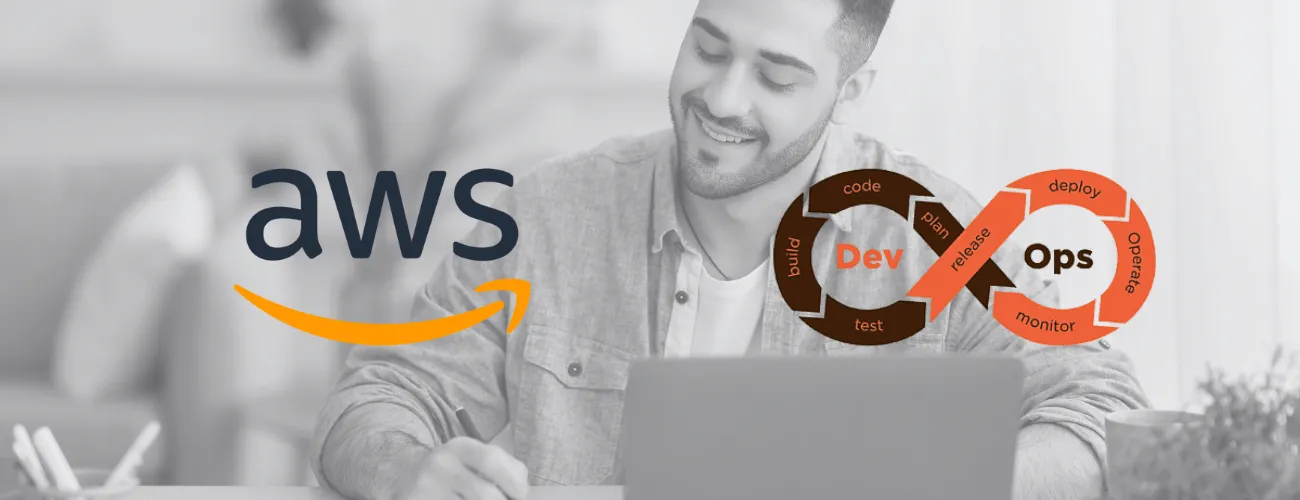



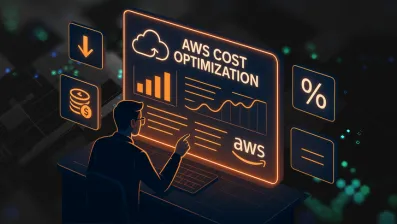

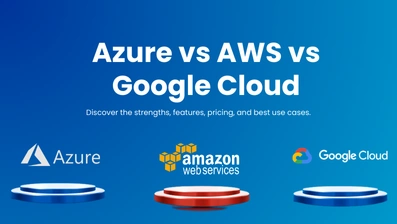

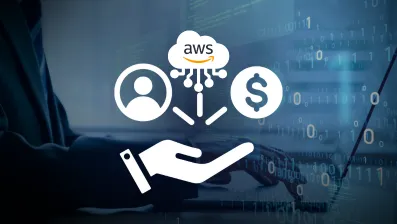

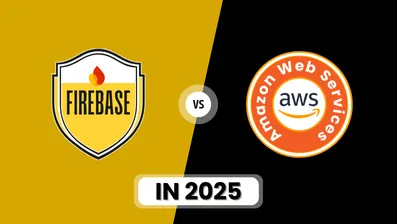

 +91 9680599916
+91 9680599916
 vanshika@dotstark.com
vanshika@dotstark.com
